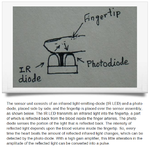- Joined
- Jan 22, 2008
- Messages
- 52,484
- Helped
- 14,756
- Reputation
- 29,794
- Reaction score
- 14,121
- Trophy points
- 1,393
- Location
- Bochum, Germany
- Activity points
- 298,358
Looking at the waveforms in post #19, it seems to me that you are complaining on a high level. They really don't look bad, there are level variations expectable by the nature of the measurement, but no strong interferences, e.g. hum. A more effective low-pass or bandpass filter can further reduce spurious signals.
Regarding hum, we can expect that AC light sources produce 100 Hz hum (also an unsufficiently filtered power supply) while picked-up mains voltage should be 50 Hz, well distinguishable. AC light interferences also vanish when you turn out the light...
Regarding hum, we can expect that AC light sources produce 100 Hz hum (also an unsufficiently filtered power supply) while picked-up mains voltage should be 50 Hz, well distinguishable. AC light interferences also vanish when you turn out the light...

